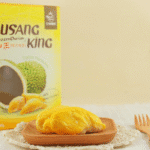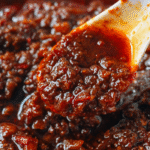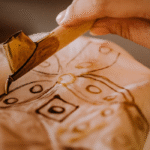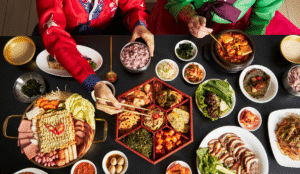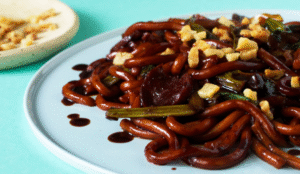The Best Roti Kosong Recipe: Flaky, Buttery, and Truly Malaysian
When people talk about iconic Malaysian dishes, roti kosong always makes the list. This unfilled flatbread is one of the most ordered items in mamak stalls, loved for its flaky layers, buttery aroma, and versatility. Whether you’re having it for breakfast with dhal curry, as a midnight supper with sambal, or simply tearing it apart to dip in sugar, roti kosong is a dish that unites Malaysians across cultures.
Mastering a roti kosong recipe isn’t just about following steps—it’s about understanding the science behind the dough, the techniques for stretching it paper-thin, and the right timing for cooking. With patience and practice, you can achieve results close to what the mamak masters serve daily. This blog will guide you through the origins, ingredients, techniques, and a Roti kosong step-by-step recipe that you can perfect at home.
Frequently Asked Questions (FAQ)
1. What is roti kosong in Malaysia?
Roti kosong is Malaysia’s version of plain roti canai. The word kosong means “empty” in Malay, so it refers to the simple, fluffy, and flaky flatbread without fillings. It’s usually eaten with dhal curry, sambal, or just sugar for a light meal.
2. Are there different types of roti?
Yes! In Malaysia, there are many variations of roti. Some popular ones include roti telur (with egg), roti cheese, roti planta (with margarine and sugar), and roti sardine (with sardine filling). Each version adds a twist to the plain roti kosong.
3. How does roti tampal differ from other roti?
Roti tampal is unique because instead of mixing the egg into the dough, the egg is “stuck” (tampal) directly on top of the cooked roti. This creates a crisp bread base with a soft, runny egg on top—perfect for dipping into curry.
4. What is the difference between roti canai and Indian roti?
Roti canai (or roti kosong) in Malaysia is flaky, layered, and slightly buttery, influenced by Indian-Muslim (Mamak) cooking but adapted to local taste. Indian roti, like chapati or naan, is usually denser, less oily, and made without flipping and stretching the dough.
5. Where does roti kosong originate from?
Roti kosong traces its roots to South Indian immigrants who came to Malaysia. Over time, it evolved into a uniquely Malaysian staple, with its paper-thin layers and wide variety of fillings, becoming a must-have dish at Mamak stalls.
Why Roti Kosong is a Malaysian Classic
Roti kosong, also commonly known as roti canai kosong, is more than just a flatbread. It’s a dish that brings people together. Families head to their favorite mamak on weekends, students bond over late-night roti sessions, and travelers often recall their first bite as a highlight of Malaysia. The beauty of this dish lies in its simplicity—flour, water, ghee, and technique—but the flavor and texture are extraordinary when done right.
The absence of fillings allows the bread’s quality to shine. A well-executed roti kosong recipe should result in a crisp, golden exterior and a soft, chewy interior that pulls apart in layers. This textural contrast is what makes it so addictive. Unlike other variations such as roti telur or roti sardine, roti kosong is all about balance and mastery. The cook’s skill is on full display, making it a true test of technique.
A Brief History of Roti Kosong
The story of roti kosong begins with the migration of Indian Muslims to Malaysia. They brought with them the tradition of making paratha, which slowly evolved into a uniquely Malaysian creation. Over time, the bread became lighter, more elastic, and paired with local accompaniments such as dhal curry, fish head curry, and spicy sambal.
In Malaysia, the dish took on a new identity, reflecting the country’s diversity. Today, mamak stalls serve countless variations—roti bawang, roti tisu, roti telur cheese—but roti kosong remains the purest form. When you attempt this roti kosong recipe, you’re connecting with both Indian heritage and Malaysian innovation. You’re also stepping into a centuries-old tradition where food tells the story of migration, adaptation, and belonging.
The Magic Behind a Perfect Roti Kosong
Every good roti kosong recipe relies on three critical elements: the dough, the stretching, and the cooking. Each stage influences the final texture and flavor.
- The Dough – The foundation. The right balance of flour, water, ghee, and milk proteins creates elasticity. The gluten needs to develop enough to allow stretching but not so much that the dough resists. Adding condensed milk or sugar gives flavor and helps browning.
- The Stretching – The showstopper. Watching a skilled mamak stretch dough is like watching a performance. The dough is tossed, slapped, and pulled until it becomes almost transparent. At home, you may not achieve the same flair at first, but gentle persistence will get you close.
- The Cooking – The transformation. A hot griddle seals the dough, caramelizes the sugars, and crisps the ghee layers. Cooking each side evenly is crucial. The final touch—clapping the bread between your hands—separates layers and gives it the classic fluffy texture.
Ingredients You’ll Need For The Roti Kosong Recipe
Here’s the essential list for the best roti kosong recipe:
- 500g all-purpose flour (higher protein gives better elasticity)
- 1 tsp fine salt
- 2 tbsp sugar (for flavor and browning)
- 2 tbsp condensed milk (optional but recommended)
- 1 egg (for structure and richness)
- 2 tbsp ghee or unsalted butter, melted
- 200–250 ml water (add gradually to control dough texture)
- Neutral oil for soaking (sunflower or vegetable oil)
Chef’s tip: Avoid bread flour, which can make the dough too tough, and pastry flour, which can make it too weak, it is an important note for the roti kosong recipe. All-purpose flour provides the right balance for a stretchy yet tender roti, perfect to make the best roti kosong recipe.
The Best Roti Kosong Recipe (Step by Step)
Now, let’s break down the Roti kosong step-by-step recipe in detail. Follow these carefully for consistent results.
Step 1: Preparing the Dough
- Mix flour, salt, and sugar in a large bowl.
- Add the egg, condensed milk, and melted ghee.
- Gradually add water while mixing until a sticky dough forms.
- Knead for 10–12 minutes until the dough becomes smooth, elastic, and slightly tacky.
The kneading process is essential. Too little kneading and the dough won’t stretch; too much and it becomes rubbery. You’re aiming for a balance—soft yet strong enough to handle stretching later.
Step 2: Resting the Dough
- Divide the dough into small balls, about the size of a lime.
- Coat each ball generously with oil and arrange in a bowl.
- Cover with cling wrap and rest for at least 4 hours, ideally overnight.
This resting stage is non-negotiable. It allows the gluten strands to relax, preventing resistance when stretching. It also gives time for the ghee to soak in, which contributes to flakiness. Skipping or shortening this stage will make your roti kosong recipe less authentic.
Step 3: Stretching the Dough
- Generously oil your work surface and hands.
- Place one dough ball in the center and flatten with your palms.
- Slowly stretch the dough outward using your fingertips, working in circles until it’s paper-thin.
- Fold the stretched sheet inward from the edges to form layers.
At this stage, precision matters. The thinner you stretch, the lighter the roti. Tears are common, especially for beginners. Don’t worry—folding conceals imperfections. With practice, your dough will stretch wider and thinner each time, also slowly improving your own roti kosong recipe.
Step 4: Cooking the Roti
- Preheat a flat griddle or non-stick pan over medium heat.
- Place the folded dough on the pan.
- Cook for 1–2 minutes on each side until golden brown patches form.
- Once cooked, clap the roti between your hands to release steam and separate the layers.
Temperature control is critical here. Too hot, and the roti burns before cooking through. Too low, and it turns greasy rather than crisp. Aim for medium heat for consistent results, it is essential for the perfect roti kosong recipe.
Tips for Success
- Use oil generously during resting and stretching—it keeps dough supple.
- Don’t rush resting time—overnight is best for maximum pliability.
- Clap after cooking—this step separates layers and prevents sogginess.
- Work with small dough balls if you’re new. Large ones are harder to stretch thin.
- Keep hands oiled—dry hands cause tearing and uneven textures.
Each of these small adjustments can elevate your roti kosong recipe from good to outstanding.
Serving Suggestions For Roti Kosong Recipe
Roti kosong is a blank canvas. While dhal curry is the most traditional pairing, the bread pairs equally well with chicken curry, fish curry, or even sweet toppings like sugar, condensed milk, or Nutella.
A well-made roti kosong recipe can stand alone—crispy, buttery, and satisfying even without accompaniments. But part of the joy is mixing and matching flavors. Try pairing it with spicy sambal for a fiery kick or dipping it in creamy rendang gravy for a decadent experience.
Why Make Roti Kosong at Home?
Yes, mamak stalls are everywhere, but making roti at home allows you to control every element—from flour choice to oil type. It’s also more rewarding, especially when you master the roti kosong recipe after multiple tries.
Homemade versions let you experiment. Want it extra crispy? Cook it slightly longer. Prefer it softer? Use more ghee and reduce cooking time. Making it yourself turns roti from a casual snack into a culinary project worth sharing.
Troubleshooting Common Mistakes
- Dough too stiff? Add a splash of water and knead again.
- Dough tearing? Rest longer and use more oil.
- Roti dense instead of fluffy? Stretch thinner and clap after cooking.
- Roti too greasy? Use less oil in the pan, but still coat the dough during resting.
Every mistake is part of learning. The beauty of this roti kosong recipe is that even the less-than-perfect attempts are still delicious.
The Joy of Roti Kosong
Cooking roti kosong isn’t just about filling your plate—it’s about engaging with tradition, technique, and patience. Each time you stretch and cook, you’ll improve, getting closer to the mastery displayed at mamak stalls.
Sharing this bread with family or friends connects you to Malaysia’s food culture. The roti kosong recipe is simple, but the joy it brings is immense. Once you master it, you’ll carry a piece of Malaysian culinary heritage in your own kitchen.
Conclusion
The best roti kosong recipe combines patience, technique, and respect for tradition. From kneading to stretching, each step requires care. With practice, your flatbread will come out crisp, buttery, and layered—just like the ones at your favorite mamak stall.
Follow this roti kosong recipe step by step, and you’ll be rewarded with a dish that’s not just food but a story of migration, culture, and mastery. Roti kosong may look simple, but its depth lies in the details—and now, you have everything you need to perfect it.
